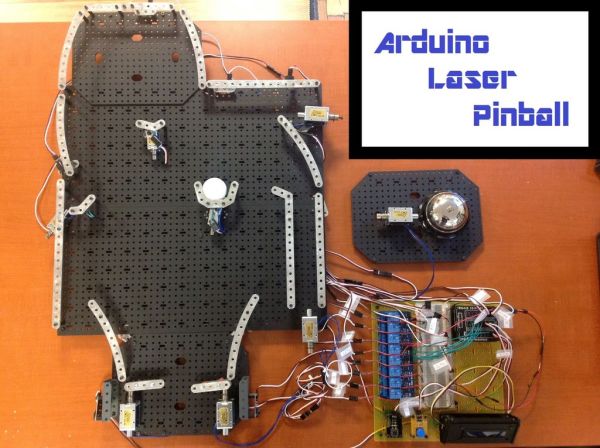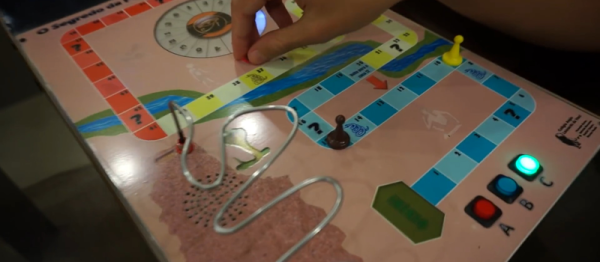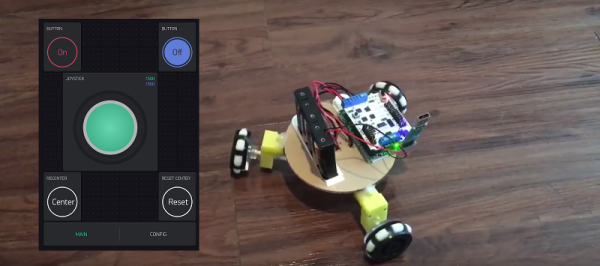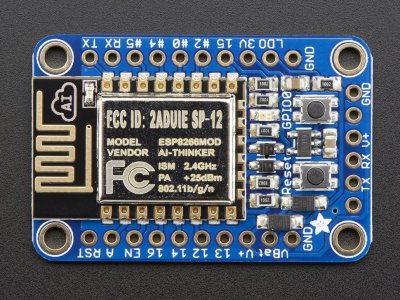Have you ever wanted to roll your own pinball machine? It’s one of those kinds of builds where it’s easy to go off the deep end. But if you’re just getting your feet wet and want to mess around with different playfield configurations, start with something like [joesinstructables]’ Arduino Laser Pinball.
It’s made from meccano pieces attached with standoffs, so the targets are easy to rearrange on the playfield. [joesinstructables] wanted to use rollover switches in the targets, but found that ping pong balls are much too light to actuate them. Instead, each of the targets uses a tripwire made from a laser pointing at a photocell. When the ping pong ball enters the target, it breaks the beam. This triggers a solenoid to eject the ball and put it back into play. It also triggers an off-field solenoid to ring a standard front-desk-type bell one to three times depending on the target’s difficulty setting.
The flippers use solenoids to pull the outside ends of levers made from meccano, which causes the inside ends to push the ball up and away from the drain. Once in a while a flipper will get stuck, which you can see in the demo video after the break. An earlier version featured an LCD screen to show the score, but [joesinstructables] can’t get it to work for this version. Can you help? And do you think a bouncy ball would actuate a rollover switch?
This isn’t the first pinball machine we’ve covered. It’s not even the first one we’ve covered that’s made out of meccano. Here’s an entire Hacklet devoted to ’em. And remember when an Arduino made an old table great again?


















